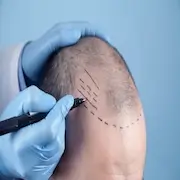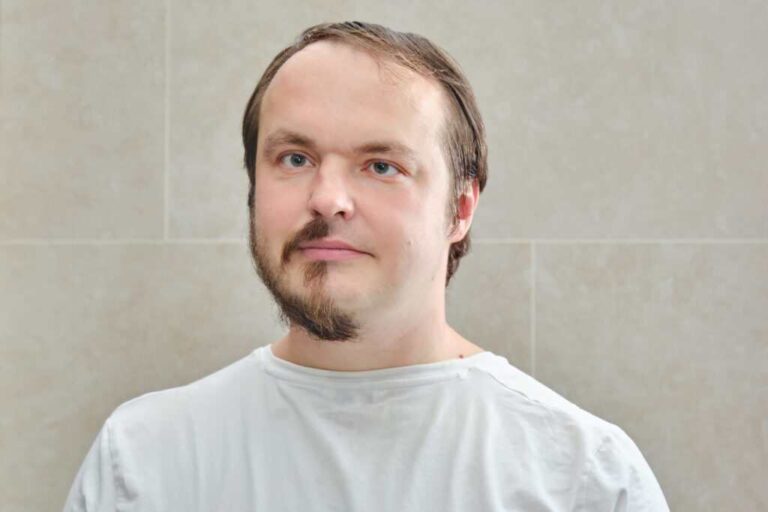Hair Transplant on Scar: All You need to know about Hair Transplants
If you googled ‘hair transplant on scar’ you either mean hair transplant to cover scars or hair transplant surgery scars. Both are equally valid concerns and doing some research on hair transplant scars is a good way to prepare for hair transplant surgery. Hair transplants are a permanent solution to hair loss concerns and yield natural-looking and seamless results on people who have undergone hair transplants, beard transplants, eyebrow transplants, and scar hair transplants.
This blog will address all your concerns related to hair transplants and scars and/ or Hair transplant scars.
Treatment Options for Hair Loss and Scars Repair
Hair loss is a common occurrence in both men and women. The cause could be Androgenetic Alopecia or male pattern baldness and or female pattern baldness that results in receding hairline, bald and patchy hair, and thinness. Hair loss can be genetic, or hormonal, caused by trauma, medication side effects, and lifestyle choices. Whatever the root cause, hair loss is not even throughout and looks different in different people. To address hair loss, people opt for medication, home remedies, and now hair transplant procedures to stimulate hair regrowth. Although there are many treatment options, a hair transplant is a permanent and natural way to restore hair.
One type of hair loss can manifest as scars. Scar hair loss could be due to injury, surgery, or even medication that can cause scarring. If the scar tissue or area is healthy skin with some flow of blood then hair transplant surgical methods can be an effective way to cover the scars on the scalp and facial area. Individual hair follicles are surgically removed and placed in the scar area where scalp tissue is healthy enough to stimulate hair growth.

Hair Transplant to Cover Scar
Hair is one vital element that enhances the beauty and youth of a person, that’s why patchy hair, thin hair, and any bald spots and gaps look less appealing and dim the overall look of a person. If you have a scar from any injury, surgery, or incident on your head, scalp, or facial hair area and you are not happy about it then a hair restoration surgery can fix it. Hair transplants are often used to cover scars and restore hair regrowth in the affected area. Such a hair regeneration procedure requires delicate skills and techniques to acquire the desired results.
Hair Transplants on Scars: Things You Need to Know
Scars are often bumpy and blood supply is comparably low. That is the reason that hair growth in the area is nil or minimal. However, this can be remedied with a successful hair transplant surgery for scars.
Hair restoration surgery is a cosmetic procedure that is carried out by professional hair surgeons. Like in other hair restorative procedures, in scar hair transplants, procedures like Follicular unit transplantation (FUT), Follicular unit extraction (FUE), and the Implanter pen method are used. Whether you should opt for an FUE or FUT depends on your hair loss scale and the recommendation of the doctor. Both methods are equally successful.
FUT is a type of hair transplant where a strip of hair is extracted during the surgical procedure and from this FUT strip graft follicles are harvested. To cover scar tissue, hair follicles are removed from the back of the head or side hair as these are good donor sites to provide healthy follicles. In the FUE method, individual hair grafts are extracted from the donor area and implanted in the recipient area.
The Implanter pen is a relatively new method of hair surgery where the pen-like needle is used to extract hair follicles and inject them into the scar area.
Often FUE and FUT are combined to get the desired results. These methods are developed to extract and harvest as many hair follicles as possible so only the healthiest follicles can be used in the recipient area or scar tissue area.
Scar hair transplants for scar repair are quite successful. There are different types of scarring like a linear scar due to surgery, scarring caused by medication or other traumas, and other reasons, and frankly, a hair plug isn’t an option. which necessitates a hair transplant on a scar. No matter the amount of scarring, or the thickness of the scar, in most scar hair transplants, hair grows naturally after the surgery. Likewise, whether you opt for an FUE or a FUT, scar removal with hair restorative surgery is a permanent and seamless solution to this problem.
A good hair transplant surgeon will determine the amount of graft follicles you will need to cover the affected area and will also see if you have enough to cover the area. Based on the type of surgery, number of grafts and size of the scar, area covered, the cost will be determined. Depending on the size of the scar tissue, grafts will be harvested.
Hair Transplant Surgery Scars
In Follicular Unit Transplant, there is minimal scarring post-surgery. This method is also called the strip method, when the doctor removes hair from the donor area, there is a tiny strip that can be covered using hair from the side. Right after surgery, this strip might be visible as the hair is short, over time these surgery scars will fade and hair in the surrounding areas will cover it perfectly.
In FUE, there are tiny incisions made to extract follicles from the back of the scalp or side area of the scalp. For scar revision, these donor hairs have strong and healthy follicles that are then harvested and individually placed in the hair transplant scar revision area. FUE hair transplant procedure is less invasive and any redness and scarring is barely visible. Within a week it heals and with time scars fade away.
FAQs about Hair Transplants and Scars




